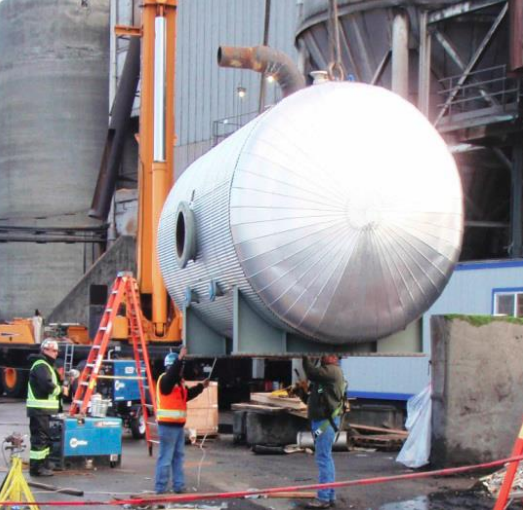
What do you think would happened to the two workers under this suspended load if it fell’

It’s very important for workers to be aware of their surroundings so that they can avoid dangerous situations. For example, many workplaces use cranes, hoists and other lifting devices to move materials. Workers who are in the vicinity of such devices while they’re in use must take care not to, say, walk into the path of the device’or stand underneath an elevated load like the workers in this picture.
According to the person who submitted the picture to the US Naval Safety Center, ‘This was taken about four hours after the crane crew gave a long lecture during the daily safety meeting about the importance of people not crossing the danger tape. Apparently, they didn’t want anyone else to stand under suspended loads.’ If this load had fallen, the results could’ve been disastrous.
Example: A crane rigger, whose job involved assisting a tower-crane operator with moving material, was fatally crushed by nearly two tonnes of building material that slipped out of a lifting sling.
That’s why you should instruct workers that they shouldn’t stand or walk under elevated loads unless it’s necessary and the device operator knows that they’re under the load.
In addition, workers can also be at risk if lifting devices carry loads over areas where they’re working. So the OHS regulations generally say that if it’s reasonably practicable, loads should not pass over workers. However, the laws recognize that doing so can’t always be avoided. So you may be permitted to use a lifting device to move a load over workers provided certain conditions are met, such as if:
- There’s no other practical alternative under the circumstances; and
- The workers who’ll be under the load are effectively warned of the danger, such as through an audible signal.
10 RULES FOR SAFE USE OF LIFTING DEVICES
Here are 10 basic rules for the safe use and operation of lifting devices, such as cranes and hoists:
- Operators shouldn’t leave a lifting device unattended when a load is suspended from it.
- Ensure that safe work procedures for work around overhead power lines are followed when there’s a risk a lifting device could come into contact with such lines. (See, ‘Electrical Safety: Take 4 Steps to Protect Workers Around Overhead Power Lines,’ May 2013, p. 1.)
- When the movement of a load could endanger others, use tag lines, guide ropes or clamps to control it.
- When traveling with a load, the operator should ensure it’s carried as close to the ground as possible.
- Workers shouldn’t ride on a load, hook, rigging or bucket attached to a lifting device.
- Make sure to implement appropriate traffic safety measures, such as signs, barricades or flaggers.
- Ensure lifting devices have audible warning signals to alert workers to lifting operations.
- Ensure that the wind or other weather conditions won’t impact the lifting of a load or make it hazardous.
- Protect the operators of lifting devices from hazards, such as falling or flying objects or material and extreme cold or heat.
- The load must be safely landed and supported before it’s unhooked from the lifting device.
For more information on safely using lifting devices, see MACHINERY & EQUIPMENT: 7 Key Elements of the Lifting Device Requirements, which includes links to an overhead crane lift calculation form and a tower crane weekly and monthly inspection form.
